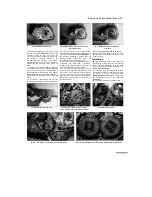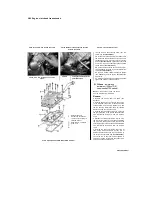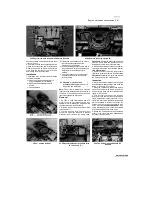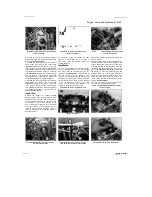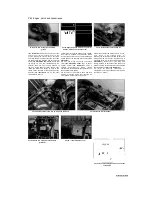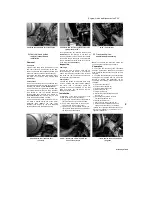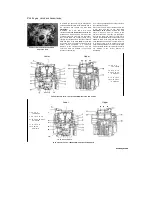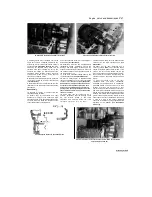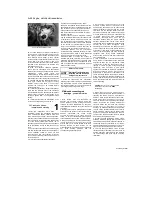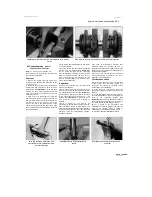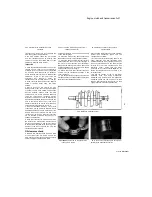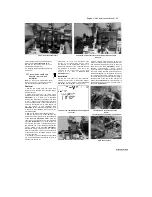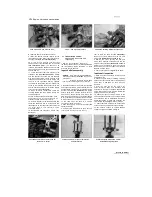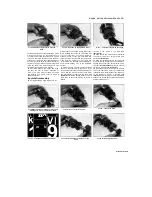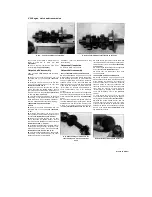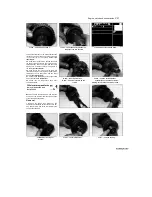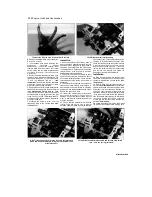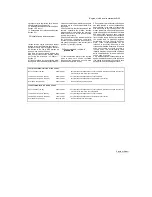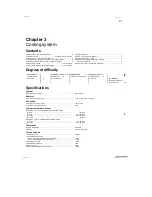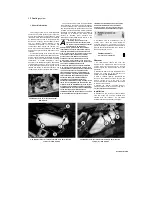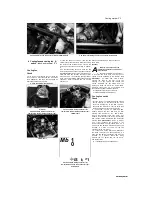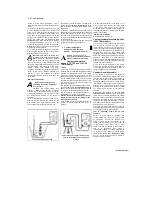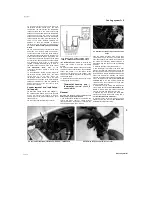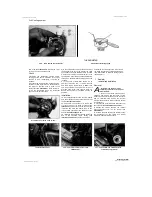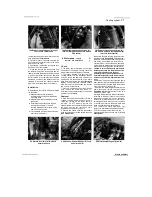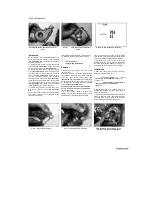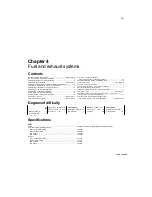
Engine, clutch and transmission 2«53
30.2 Lift out the output shaft
30.4a Draw out the shaft once the retainer screws have been
removed
upper crankcase, making sure all bearings
remain in place
(see illustration 29.3).
29 Fit
the connecting rods onto the
crankshaft (see Section 28).
30 Reassemble the crankcase halves (see
Section 25).
30 Transmission shafts and
bearings - removal and
installation
Note:
To remove the transmission shafts
the engine must be removed from the frame
and the crankcase halves separated.
Removal
1 Remove the engine from the frame (see
Section 5) and separate the crankcase halves
(see Section 25).
2 Lift the output shaft out of the casing, noting
how the selector forks locate in the grooves
(see
illustration).
If it is stuck, use a soft-faced
hammer and gently tap on the ends of the shaft
to free it. Remove the bearing half-ring retainer
from the right-hand end of the output shaft and
note how the locating pin on each bearing fits
into the cutouts in the crankcase
(see
illustration 30.11).
If the half-ring retainer is not
in the slot in the crankcase, remove it from the
slot in the bearing.
3 Remove the selector forks (see Section 32).
4 Remove the three Torx screws securing the
input shaft bearing retainer on the right-hand end
of the shaft
(see illustration 30.7c).
Draw the
shaft out of the crankcase from the right-hand
side
(see illustration).
If it is stuck, thread a 6
mm bolt into the centre of the blanking plug on
the left-hand end of the shaft and remove the
plug by pulling on the bolt
(see illustration).
Discard the plug O Ting as a new one must be
used. Once the plug is removed, tap on the end
of the shaft using a soft-faced mallet to free it
from the crankcase.
5 If necessary, the input shaft and output shaft
can be disassembled and inspected for wear or
damage (see Section 31).
6 Referring to
Tools and Workshop Tips
(Section 5) in the Reference Section, check
the bearings on the transmission shafts or in
the bearing housings in the crankcase. Renew
the bearings if necessary. Also check the
condition of the output shaft oil seal and
renew it if it is worn or damaged
(see
illustration 25.11).
Installation
7
Slide the input shaft into the crankcase,
aligning the four holes in the bearing retainer
with those in the crankcase
(see illustration
and 30.4b).
Use the screws, a long bolt or a
"~V
fr
P^
\.
IP
■
(
■* -*P
/
--\J~
IBP!
/^"
| If
1
©^'
30.4b Thread a suitable bolt into the plug and
pull it out
rod as a guide to align the holes, as once the
retainer is in the housing it will be difficult to turn.
Use a hammer and block of wood to drive the
shaft fully home
(see illustration).
Apply a
suitable
non-permanent
thread
locking
compound to the Torx screws and tighten them to
the torque setting specified at the beginning of
the Chapter.
Note:
It is advisable to renew the
Torx screws because the originals are likely to
have been damaged by previous staking.
Using a
suitable punch, stake the screws against the
retainer
(see illustration).
If it was removed, fit
the blanking plug with a new O-ring and press it
home
(see illustrations).
30.7a Note how the holes must align
(arrow)
30.7c Install the Torx screws (arrowed) and
stake them in place
Staned by Stalker
%
I
^
30.7b Tap the shaft into place as shown

